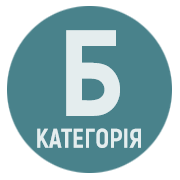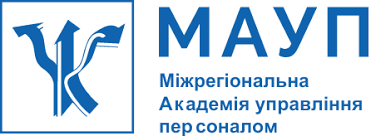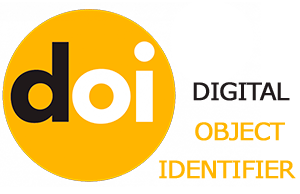STRUCTURE OF INTELLECTUAL CAPITAL OF MODERN ENGINEERING SERVICES
DOI:
https://doi.org/10.32689/2523-4536/74-7Keywords:
economy, digital economy, engineering, intellectual capital, classification of intellectual capital, innovative labor, knowledge-intensive laborAbstract
The issues of managing intellectual capital, considering changes in technological landscapes, concern many scientists and are relevant in knowledge-intensive industries. It has been identified that for engineering companies, which are an integral part of the value creation chain, the role of intellectual capital is critically important, but the application of existing approaches to its structure needs improvement. The purpose of this inquiry is to summarize the material on the classification of intellectual capital in the context of a knowledge-intensive enterprise providing engineering services, and to propose a model of its structure with the identification of dominant elements that serve as drivers of its growth. Justification for the stratification of intellectual capital into static and changeable layers is provided, which is particularly relevant for determining the elements influencing its volume and value change. The author's approach to defining the structure of intellectual capital within the context of an enterprise not only complements existing scientific developments but, moreover, refines its understanding in the conditions of the digital economy. It distinguishes the active (variable) part, which precisely ensures its growth and leads to competitive advantages. Such logic also explains the differences in defining intellectual capital and intellectual potential. Considering the changes in the technological landscape and the increasing role of artificial intelligence in companies using intellectual labor, it is proposed to consider the definition of information-technological capital and to separate it within the structure as a separate dominant element. This allows for the analysis of its direct interaction with the human component of intellectual capital and identifies factors that enhance management efficiency. An analysis of the significance of customer capital in the context of providing engineering services in the value creation chain is presented, which contributes to the increase in the market value of intellectual capital. Possibilities for further scientific research enabled by such an interpretation of the structure of intellectual capital are formulated.
References
Edvinsson L. Intellectual Capital: Realizing Your Company’s True Value by Finding Its Hidden Brainpower / Leif Edvinsson, Michael Malone. Paris: Maxima, 1999. 225 p.
Геєць В. М. Україна у вимірі економіки знань / ДУ «Інститут економіки та прогнозування НАН України» / ред. акад. НАН України В. М. Гейця. Київ : Основа, 2006. 592 с.
Грішнова О. А. Людський, інтелектуальний і соціальний капітал України: сутність, взаємозв’язок, оцінка, напрями розвитку. Соціально-трудові відносини: теорія та практика: зб. наук. пр. / Київ. нац. екон. ун-т ім. Вадима Гетьмана, 2014. Том. 7. № 1. С. 34–42.
Літвінов О. C. Визначення сутності інтелектуального капіталу. Modern Economics, 2018. № 11. С. 98–104. DOI: https://doi.org/10.31521/modecon.V11(2018)-16
Собко О. М. Інтелектуальний капітал підприємства: концептуалізація-функціонування-розвиток : монографія. Тернопіль : Крок, 2014. 360 с.
Братчук Л. М. Економічна сутність інтелектуального капіталу та його облікове забезпечення. Економічний аналіз: зб. наук. праць / Тернопільський національний економічний університет. Тернопіль : Економічна думка, 2015. Том 21. № 2. С. 262–269.
Кендюхов О. В. Інтелектуальний капітал підприємства: гносеологія економічної категорії. Вісник Донецького університету економіки та права. 2011. № 2. С. 12–16.
Igielski M. The role of intellectual capital in building a competitive advantage for companies from the Baltic Sea Region in the transport, shipping and logistic industry (TSL). SHS Web of Conferences, 2018. Vol. 57, P. 01015. DOI: https://doi.org/10.1051/shsconf/20185701015
Mohammad H.S., Lajuni N., Yeng S.K. Current Trend and Development on Intellectual Capital and Performance: A Bibliometric Analysis. International Journal of Academic Research in Business and Social Sciences, 2021. Vol. 11, № 7. DOI: https://doi.org/10.6007/ijarbss/v11-i7/10449
Собко О.М. Інтелектуальний капітал і креація вартості підприємства: монографія / О.М. Собко. Тернопіль : ТНЕУ, 2016. 444 с.
Яворська О.Г. Інтелектуальний капітал в епоху становлення та розвитку цифрової економіки. Науковий вісник Мукачівського державного університету: серія «Економіка», 2020. Т. 7. № 1. С. 129–134.
Козловський С.В., Синєгуб П.С. Парадигма управління інтелектуальним капіталом в умовах дигіталізації сучасної економіки. Економіка та держава, 2022. № 2. С. 85–93. DOI: https://doi.org/10.32702/2306-6806.2022.2.85
Кравчук Н.О. Теоретичні засади функціонування інтелектуального капіталу підприємства Інноваційна економіка. 2012. № 8. С. 114–117.
Sveiby K.E. Measuring Intangibles: Suggested Indicators with cases from professional service organisations and high-tech firms. 2018. 29 p. URL: http://www.sveiby.com/files/pdf/measuringintangibles-suggestedindicators.pdf.
Стюарт Т. Інтелектуальний капітал Нове джерело багатства організацій / пер. с англ. В. А. Ноздриной, 2007. 366 с.
Edvinsson L. Developing a Model for Managing Intellectual Capital / Leif Edvinsson, Patrick Sullivan. European Management Journal, 1996. Vol. 14. № 4, P. 356–364.
Merrifield P.R. Book Reviews: Raymond B. Cattell. Abilities: Their Structure, Growth, and Action. American Educational Research Journal, 1975. Vol. 12. № 4. P. 516–521. DOI: https://doi.org/10.3102/00028312012004516
Канаш О.Є. Моральне зношування людського капіталу: сутність, різновиди, засоби буферизації. Проблеми системного підходу в економіці, 2020. Вип. 78. № 4. С. 138–143. DOI: https://doi.org/10.32782/2520-2200/2020-4-19
Літвінов О. С. Інтелектуальний капітал підприємства: сутність, оцінка, розвиток : монографія. Одеса : Астропрінт, 2019. 392 с.
Hartshorne J. K., Germine L. T. When Does Cognitive Functioning Peak? The Asynchronous Rise and Fall of Different Cognitive Abilities Across the Life Span. Psychological Science, 2015. Vol. 26, № 4. P. 433–443. DOI: https://doi.org/10.1177/0956797614567339
Edvinsson L., Malone M. (1999). Intellectual capital: realizing your company’s true value by finding its hidden brainpower, Paris Maxima, 225 p.
Heiets V. M. (2006) Ukraina u vymiri ekonomiky znan [Ukraine in the Dimension of Knowledge Economy] / DU «Instytut ekonomiky ta prohnozuvannia NAN Ukrainy» / red. akad. NAN Ukrainy V. M. Heitsia. Kyiv: Osnova, 592 p. (in Ukrainian)
Hrishnova O. A. (2014) Liudskyi, intelektualnyi i sotsialnyi kapital Ukrainy: sutnist, vzaiemozviazok, otsinka, napriamy rozvytku [Human, Intellectual, and Social Capital of Ukraine: Essence, Interrelation, Evaluation, Development Directions]. Sotsialno-trudovi vidnosyny: teoriia ta praktyka: zb. nauk. pr. / Kyiv. nats. ekon. un-t im. Vadyma Hetmana, vol. 7, no. 1, P. 34–42. (in Ukrainian)
Litvinov O. S. (2018) Vyznachennia sutnosti intelektualnoho kapitalu [The definition of the essence of intellectual capital]. Modern Economics, no. 11, p. 98–104. DOI: https://doi.org/10.31521/modecon.V11(2018)-16 (in Ukrainian)
Sobko O. M. (2014) Intelektualnyi kapital pidpryiemstva: kontseptualizatsiia-funktsionuvannia-rozvytok: monohrafiia [Intellectual Capital of an Enterprise: Conceptualization, Functioning, Development]. Ternopil: Krok, 360 p. (in Ukrainian)
Bratchuk L. M. (2015) Ekonomichna sutnist intelektualnoho kapitalu ta yoho oblikove zabezpechennia [The Economic Essence of Intellectual Capital and Its Accounting Provision]. Ekonomichnyi analiz: zb. nauk. prats / Ternopilskyi natsionalnyi ekonomichnyi universytet, Ternopil: Ekonomichna dumka, vol. 21, no. 2, p. 262–269. (in Ukrainian)
Kendiukhov O. V. (2011) Intelektualnyi kapital pidpryiemstva: hnoseolohiia ekonomichnoi katehorii [Intellectual Capital of an Enterprise: Epistemology of an Economic Category]. Visnyk Donetskoho universytetu ekonomiky ta prava, no. 2, p. 12–16. (in Ukrainian)
Igielski M. (2018) The role of intellectual capital in building a competitive advantage for companies from the Baltic Sea Region in the transport, shipping and logistic industry (TSL). SHS Web of Conferences, vol. 57, pp. 01015. DOI: https://doi.org/10.1051/shsconf/20185701015
Mohammad H. S., Lajuni N., Yeng S. K. (2021) Current Trend and Development on Intellectual Capital and Performance: A Bibliometric Analysis. International Journal of Academic Research in Business and Social Sciences, vol. 11, no. 7. DOI: https://doi.org/10.6007/ijarbss/v11-i7/10449
Sobko O. M. (2016) Intelektualnyi kapital i kreatsiia vartosti pidpryiemstva: monohrafiia [Intellectual Capital and Value Creation of an Enterprise]. Ternopil: TNEU, 444 p. (in Ukrainian)
Yavorska O. H. (2020) Intelektualnyi kapital v epokhu stanovlennia ta rozvytku tsyfrovoi ekonomiky [Intellectual Capital in the Era of Emergence and Development of the Digital Economy]. Naukovyi visnyk Mukachivskoho derzhavnoho universytetu: seriia «Ekonomika», zb. naukovykh prats, vol. 7, no. 1, p. 129–134. (in Ukrainian).
Kozlovskyi S. V., Syniehub P. S. (2022) Paradyhma upravlinnia intelektualnym kapitalom v umovakh dyhitalizatsii suchasnoi ekonomiky [The Paradigm of Intellectual Capital Management in the Context of Digitization of the Modern Economy]. Ekonomika ta derzhava, no. 2, p. 85–93. DOI: https://doi.org/10.32702/2306-6806.2022.2.85 (in Ukrainian)
Kravchuk N. O. (2012) Teoretychni zasady funktsionuvannia intelektualnoho kapitalu pidpryiemstva [Theoretical Foundations of Enterprise Intellectual Capital Functioning]. Innovatsiina ekonomika, no. 8, p. 114–117. (in Ukrainian)
Sveiby K. E. (2018) Measuring Intangibles: Suggested Indicators with cases from professional service organisations and high-tech firms, 29 p. Available at: http://www.sveiby.com/files/pdf/measuringintangibles-suggestedindicators.pdf
Stewart T. (2007) Intelektualnyi kapital Nove dzherelo bahatstva orhanizatsii [Intellectual Capital: A New Source of Wealth for Organizations] / per. s anhl. V. A. Nozdrynoi, 366 p. (in Ukrainian)
Edvinsson L. (1996) Developing a Model for Managing Intellectual Capital / Leif Edvinsson, Patrick Sullivan. European Management Journal, vol. 14. no 4, p. 356–364.
Merrifield P. R. (1975) Book Reviews: Raymond B. Cattell. Abilities: Their Structure, Growth, and Action. American Educational Research Journal, vol. 12, no 4, p. 516–521. DOI: https://doi.org/10.3102/00028312012004516
Kanash O. Y. (2022) Moralne znoshuvannia liudskoho kapitalu: sutnist, riznovydy, zasoby buferyzatsii [Moral Depreciation of Human Capital: Essence, Types, Buffering Means]. Problemy systemnoho pidkhodu v ekonomitsi, vol. 78, no 4, p. 138–143. DOI: https://doi.org/10.32782/2520-2200/2020-4-19 (in Ukrainian)
Litvinov O. S. (2019) Intelektualnyi kapital pidpryiemstva: sutnist, otsinka, rozvytok: monohrafiia [Intellectual Capital of an Enterprise: Essence, Evaluation, Development]. Odesa: Astroprint, 392 p. (in Ukrainian)
Hartshorne J. K., Germine L. T. (2015) When Does Cognitive Functioning Peak? The Asynchronous Rise and Fall of Different Cognitive Abilities Across the Life Span. Psychological Science, vol. 26, no 4, p. 433–443. DOI: https://doi.org/10.1177/0956797614567339









